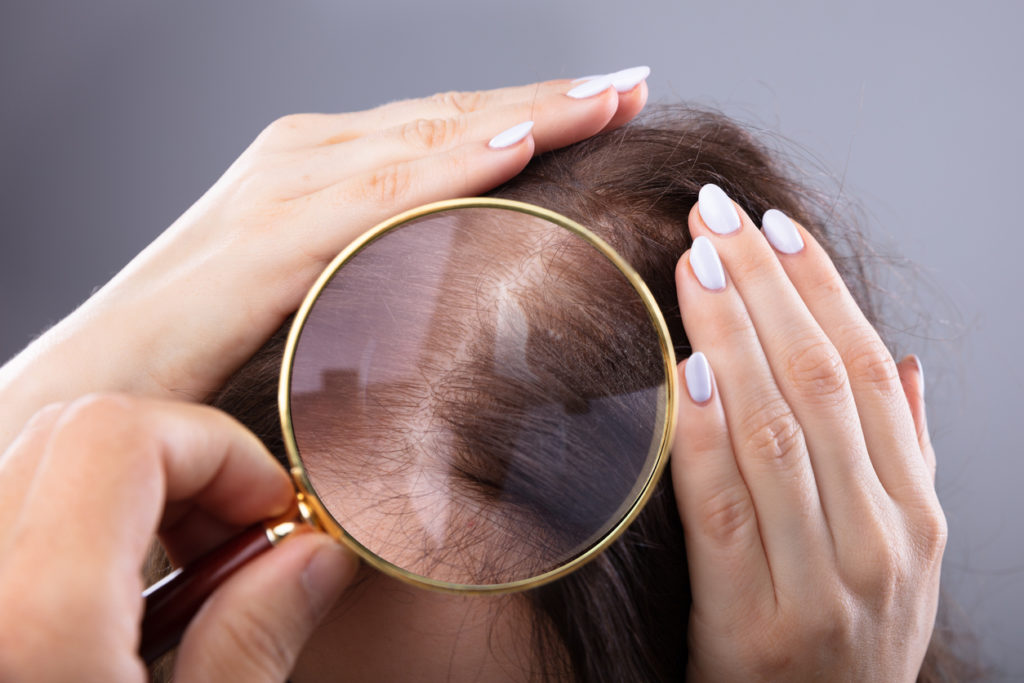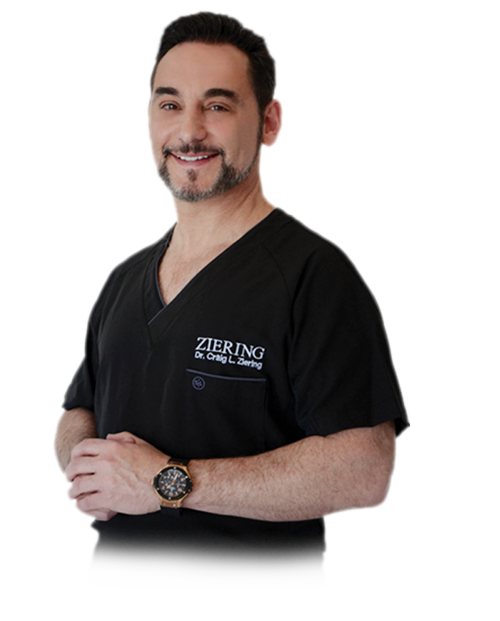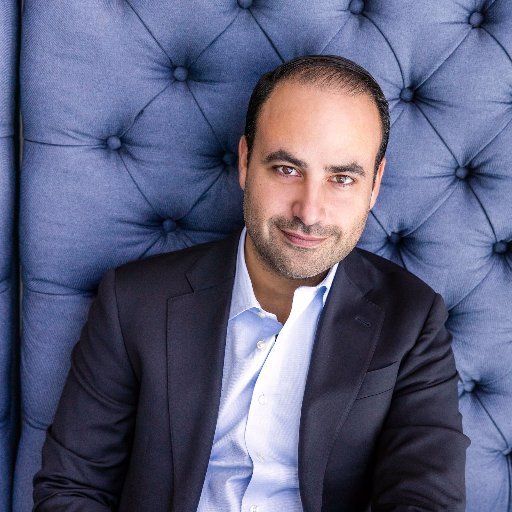Diving Deeper into Hair Loss – The Reasons and The Remedies You Should Know About
August may have been designated as National Hair Loss Awareness Month, but that doesn’t mean we’ve stopped worrying about the causes and potential treatments that even we, ourselves, are facing.

In part one of our series on hair loss, we covered causes and a few potential at-home treatments, but we wanted to learn more about stress-related hair loss as well as the in-office procedures that can minimize it going forward.
The COVID Connection
Dr. Craig Ziering, Board Certified Dermatologist, founder of Ziering Medical, and a celebrity hair transplant surgeon, explains that severe illness accompanied by high fevers can trigger hair loss. “It is clear that COVID is a culprit for hair loss,” he says, “especially when a patient has no genetic predisposition for hair loss but is experiencing increased hair shedding.” The work-from-home (WFH) environment along with increasing dependence on distance learning as well as social isolation contribute to spikes in hormones, triggering hair loss.

“Nothing is the same or normal right now,” Dr. Ziering says, "and our bodies respond accordingly, even if we don't have the virus itself.” Prolonged stress has both psychological and physiological effects, and “daily stress delays the body's ability to heal itself and affects other cellular functions when it experiences trauma or sickness.”
Feed Your Body to Feed Your Hair

Diet is one thing the experts agree upon. What we consume impacts our body’s overall health, and Dr. Ziering recommends “a healthy, well-balanced diet that’s rich in protein and green leafy vegetables to promote hair health and growth.” Foods like salmon that are rich in iron, folate, omega-3 fatty acids, and vitamins A and C promote hair growth. He also recommends including, “avocados and a range of nuts as well as healthy oils” to get sufficient vitamin E.
Topicals and Medications to Consider
If dietary changes aren’t giving you the desired results, you’ve probably researched topical treatments to manage your hair loss. Rogaine, also known as minoxidil, is a popular choice, as are numerous medications, such as Finasteride. According to Dr. Ziering, “Minoxidil has been one of the most popular and effective topical treatment options to treat male pattern baldness since its FDA approval. Combined with other substances or actives [like laser therapy],” he says, “it can be even more effective and longer lasting.” Dr. Ziering’s Formula Z83M is “a customized compound prescription that contains Minoxidil, Retinoic Acid, and inflammatory, antioxidant, and anti-androgen [testosterone-blocking] ingredients to help stimulate hair growth and decrease hair loss for both men and women.”
Maybe You Need a Specialized Shampoo
You know what estrogen and testosterone are, but you’ve probably never heard of dihydrotestosterone (DHT). It primarily causes male pattern baldness, but an estimated 30 million women suffer DHT-related hair loss, too. This hormone causes hair follicles to shrink, which is why Philip B. , one of Hollywood’s most in-demand haircare specialists, suggests implementing a two-phase shampooing process.
He recommends using a shampoo that initially removes scalp oils and then “using a shampoo that’s formulated with ketoconazole to reduce the levels of DHT on the scalp.” The double-cleansing process – something you may already be doing when you wash your face – allows the targeted DHT-product to work more effectively.
Tips for Choosing the Best Hair Restoration Provider
Hopefully, you’re already in the habit of selecting medical professionals based on their expertise and credentials. Dr. Ziering points out that “hair loss is a progressive health disorder,” and patients need to take a long-term view of the practice or doctor who will best serve them over the years during various changes and stages in their disorder. Your doctor should provide the best range of procedures, non-invasive and surgical treatments, and be able to monitor your progress and condition because hair loss can be an ongoing problem. He stresses that the medical team “needs to be progressive, dynamic and result-oriented.”

What to Expect During a Hair Loss Consultation
When you arrive for your consultation, your doctor will focus on finding the cause of your hair loss. “Patients answer screening questions to determine how long they have been experiencing hair loss, which enables me to isolate the factors that may be causing it,” says Board Certified Facial Plastic Surgeon Dr. Ben Talei. Physical signs may not tell the whole story, so a thorough medical overview may be necessary. “In those instances,” Dr. Ziering adds, “a laboratory analysis, a detailed family health history, and additional diagnostic procedures” may be involved. Both Dr. Ziering and Dr. Talei emphasize that women should have their thyroid levels checked as it may be the cause of hair thinning and/or loss. Bloodwork and skin biopsies may also be required.
Patience Really is a Virtue

In this instant gratification society, waiting for results can be difficult. Dr. Ziering reminds patients that “topicals and lesser invasive non-surgical options often require up to six months before visible results and new growth occur.” Sadly, patients often stop treatment prematurely because they aren’t properly informed about hair growth patterns. Hair grows in cycles, and both physical trauma and stress can disrupt those cycles, causing hair to go dormant for a period of time. So, if you’re just beginning treatment, keep a realistic time frame in mind, so you can truly gauge its effectiveness.
Loading...